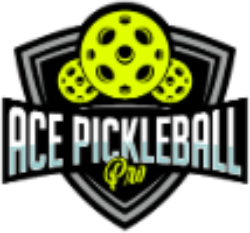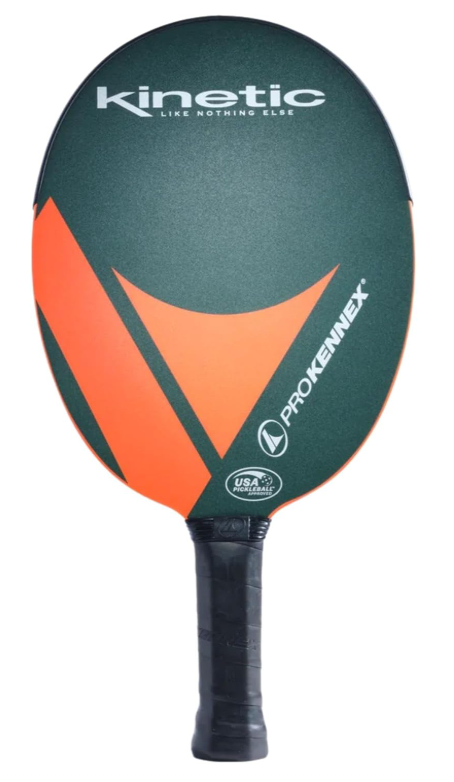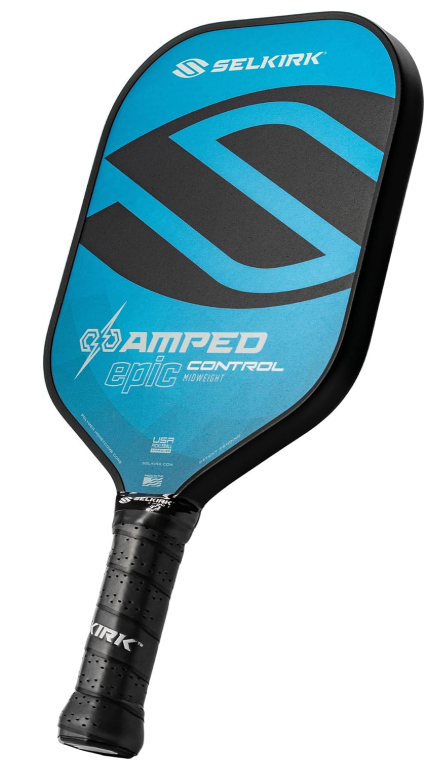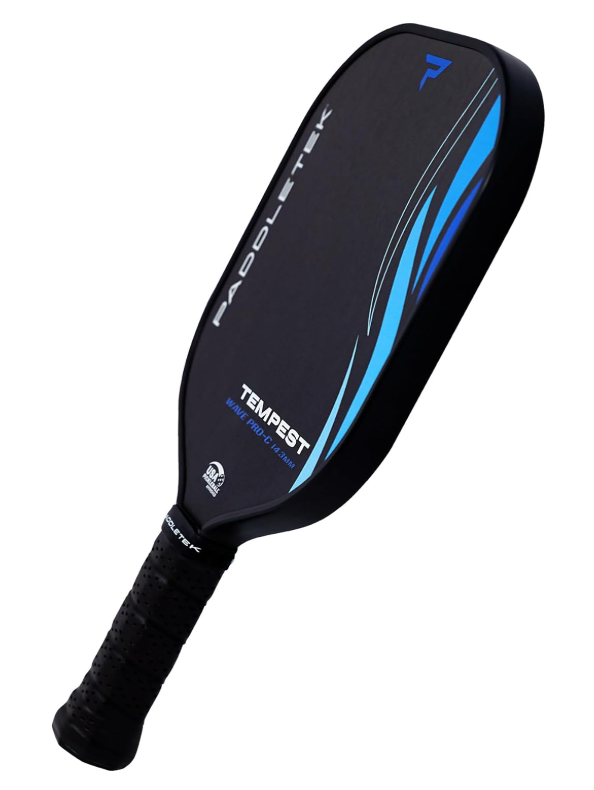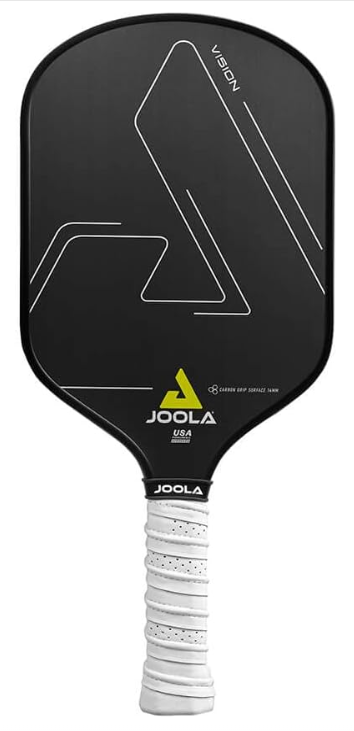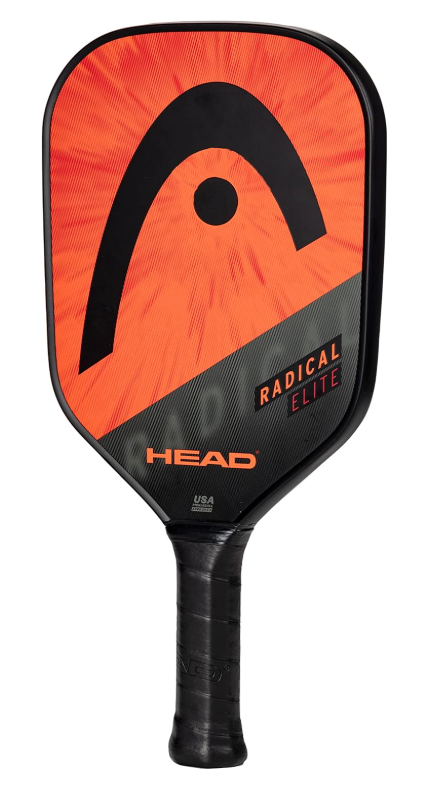An Evidence-Based Guide for Joint Relief in Pickleball: Biomechanics, Paddle Tech & Performance Longevity
Why Joint-Friendly Pickleball Gear Matters for Pain-Free Play
Pickleball is one of the fastest-growing sports—but so is wrist pain among players.
If your paddle sends a shockwave through your wrist with every dink or drive, you’re not just uncomfortable—you’re at risk of long-term injury. Whether you’re healing from a flare-up, managing arthritis, or simply want to prevent repetitive strain injuries, your gear matters.
This guide from Ace Pickleball Pro combines research-backed paddle specs, rehab-friendly materials, and real-world performance to help you find paddles that protect your wrist (and your game).
Choosing a good pickleball paddle isn’t just about performance—it’s about protecting your joints and long-term ability to play pain-free.
What Causes Wrist Pain in Pickleball? (And How to Fix It)
- Overuse Injuries: Repeated wrist flicks and impacts over time
- Improper Grip Technique: Can compress nerves and cause tendon strain (ASSH)
- Unbalanced Paddles: Head-heavy paddles increase torque on the ulnar side of the wrist
- Poor Shock Absorption: Paddles without dampening transmit vibration directly to your joints (Balaguer Hand Therapy)
What Makes a Pickleball Paddle Wrist-Friendly? (Key Features & Tech)
If you’re wondering whether paddle weight affects your joints, here’s a full guide comparing lightweight vs. heavy pickleball paddles — and which is better for pain relief.
| Paddle Feature | Why It Matters for Wrist Relief |
|---|---|
| 7.3–7.8 oz weight | Reduces rotational strain on the wrist |
| Balanced or handle-weighted | Prevents torque overload |
| Graphite/Fiberglass face | Absorbs vibration on contact |
| Polypropylene core | Offers cushioned impact control |
| 4.0–4.25″ grip size | Promotes relaxed, neutral wrist position |
Not Sure Which Paddle Is Right for You?
Use This Simple Paddle Selector Flowchart
👇 Step 1: What joint pain are you dealing with?
Wrist Pain
Look for paddles with:
- Lightweight design (7.3–7.8 oz)
- Balanced or handle-heavy weight
- Cushioned grip (4.0–4.25″)
- Soft polymer core
✅ Recommended Paddles:
- ProKennex Kinetic Pro Speed
- Selkirk AMPED Epic Lightweight
Elbow Pain (Tennis Elbow)
Look for paddles with:
- Graphite or carbon fiber face
- Polymer honeycomb core
- Medium stiffness for shock absorption
✅ Recommended Paddles:
- JOOLA Vision CGS 14mm
- Paddletek Tempest Wave Pro
Shoulder Pain or Fatigue
Look for paddles with:
- Lightweight construction
- Elongated shape for more reach
- Two-handed backhand–friendly handle
✅ Recommended Paddles:
- Selkirk AMPED Epic Lightweight
- HEAD Radical Elite
Top 5 Best Pickleball Paddles for Wrist, Elbow & Shoulder Pain (2025 Expert Picks)
(Also great for elbow and shoulder support)
ProKennex Kinetic Pro Speed
Rehab-Grade Paddle for Players Who Refuse to Sit Out
“I used to ice my wrist after every match—now I don’t even think about it.”
Built with energy transfer chambers that absorb shock and reduce torque, this paddle protects your wrist during play—and afterward. Clinical-level dampening without sacrificing feel.
✅ Pro Tip: Excellent for chronic tendonitis or tennis elbow.
Pros:
- Superior shock absorption
- Comfortable grip
- Built for injury prevention
Cons:
- Slightly muted power
- Premium price point
Selkirk AMPED Epic Lightweight
Elongated Control for Finesse-Based Players
“I stopped snapping my wrist—and started snapping points.”
With a long handle that pulls power from your shoulders (not your wrist), this paddle’s design promotes full-body mechanics. Ideal for finesse players and joint-conscious athletes.
✅ Pro Tip: Use for two-handed backhands to reduce wrist torque.
Pros:
- Balanced and lightweight
- Encourages safer mechanics
- Reduces wrist flick strain
Cons:
- Lower power output
- Takes time to adjust to the handle length
Paddletek Tempest Wave Pro
Cushioned Control for Players Managing Arthritis & Fatigue
“It feels like memory foam that wins points.”
Engineered for joint health, this paddle features a dampened core and wide sweet spot. Ideal for players who need comfort first, without sacrificing playability.
✅ Pro Tip: Great for arthritic hands and longer play sessions.
Pros:
- Cushioned feel
- Forgiving sweet spot
- Durable, joint-safe design
Cons:
- Not a “power” paddle
- Slightly heavier than others on this list
JOOLA Vision CGS 14mm
Tour-Level Vibration Control Meets Tactical Power
“I stopped feeling the sting—and started feeling unstoppable.”
Combining a carbon grip surface with a dampened polymer core, this paddle offers powerful spin and joint-safe play. Designed to reduce elbow and shoulder strain without dulling performance.
✅ Pro Tip: Perfect for players coming back from tennis elbow.
Pros:
- Spin-friendly carbon surface
- Lightweight but powerful
- Great elbow relief
Cons:
- Slightly firm grip
- More advanced feel
HEAD Radical Elite
Beginner’s Best Friend With Built-In Joint Relief
“I didn’t want to spend a lot—but I didn’t want to hurt either.”
With an ergonomic grip, balanced build, and budget-friendly price, this paddle is ideal for beginners or injury-conscious players looking for relief.
✅ Pro Tip: Great for learning clean mechanics without strain.
Pros:
- Budget-friendly
- Lightweight
- Wrist-friendly grip
Cons:
- Limited advanced control
- Muted feedback
Biomechanical Paddle Design for Wrist, Elbow & Shoulder Relief
Compare All 5 Paddles At a Glance
Looking for a quick side-by-side paddle breakdown? Here’s your built-in, printable chart — no downloads required:
| Paddle | Weight (oz) | Face Material | Core Type | Grip Size | Best For |
|---|---|---|---|---|---|
| ProKennex Kinetic Pro Speed | ~7.7 | Graphite | Kinetic Chambers + Polymer | 4.0″–4.25″ | Wrist, elbow pain, tennis elbow |
| Selkirk AMPED Epic Lightweight | 7.4–7.8 | FiberFlex Fiberglass | X5 Honeycomb Polymer | 4.25″ | Wrist & shoulder pain, finesse play |
| Paddletek Tempest Wave Pro | 7.6–8.0 | Graphite | ProPolyCore2 | 4.25″ | Arthritis, general joint fatigue |
| JOOLA Vision CGS 14mm | 7.6 | Carbon Grip Surface | Polymer Honeycomb | 4.125″ | Elbow pain, spin players, power control |
| HEAD Radical Elite | 7.6–7.9 | Graphite Composite | Polypropylene Core | 4.25″ | Beginners, budget joint-friendly option |
Best Tools to Support Wrist, Elbow & Shoulder Recovery (Beyond the Paddle)
| Tool | Use Case |
|---|---|
| Compression Wrist Brace | Reduces post-match shock |
| Two-Handed Backhand | Shifts pressure away from the wrist |
| Proper Grip Pressure | Prevents tendon strain |
| Warm-Up & Ice Protocols | Preps joints and reduces inflammation |
| Forearm Strengthening | Builds tendon resilience |
Frequently Asked Questions
Q: What is the best pickleball paddle for wrist pain relief?
The ProKennex Kinetic Pro Speed and Selkirk AMPED Epic Lightweight offer optimal vibration reduction and wrist-friendly design features.
Q: Can a paddle help with elbow and shoulder pain too?
Yes. Paddles like the JOOLA Vision and Paddletek Tempest also reduce stress on the elbow and shoulder by promoting proper swing mechanics and absorbing impact.
Q: Are lightweight paddles better for joint health?
Absolutely. Lightweight paddles reduce torque and are easier to control, minimizing strain on all upper-body joints. Learn more here.
Q: Can grip size affect wrist pain?
Yes—too small or too large a grip can force you to overgrip, leading to wrist tension. Here’s how to size it right.
Sources & References
- American Society for Surgery of the Hand (ASSH) – Tendon strain & grip ergonomics
https://www.assh.org - Balaguer Hand Therapy – Repetitive impact and microtrauma research
https://balaguerhandtherapy.com - YourPlace Physical Therapy – Paddle weight and swing dynamics in injury recovery
https://yourplacept.com
